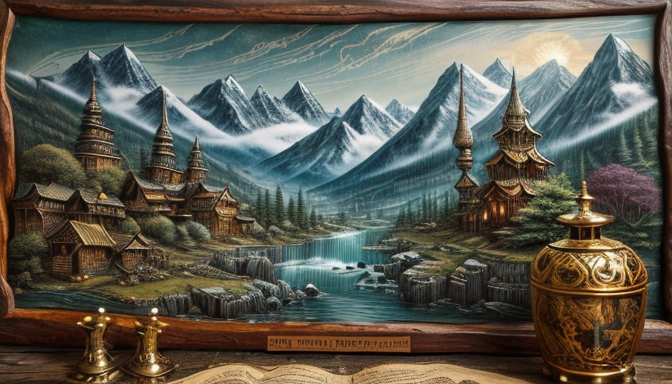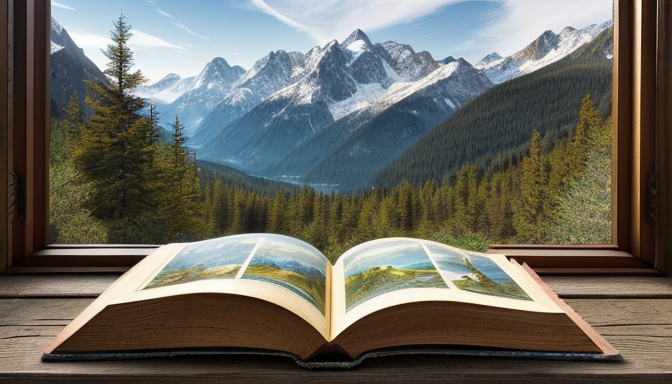Have you ever found yourself lost in a book, only to realize that the world within its pages is as vibrant and intricate as our own? Fictional landscapes serve as the backdrop to countless stories, transforming mere words into vivid realms that captivate our imagination. The journey from page to map is not just about geography; it’s about creating an immersive experience that enhances storytelling and deepens reader engagement.
At the heart of this transformation is the art of world-building. Authors meticulously craft their settings, designing everything from bustling cities to treacherous mountains. Think of it as painting a masterpiece where every stroke adds depth and meaning. Writers often employ various techniques to breathe life into their worlds:
- Detailed Descriptions: Vivid imagery allows readers to visualize landscapes, making them feel as if they are walking alongside the characters.
- Historical Context: A rich backstory adds layers to the world, making it feel authentic and lived-in.
- Geographical Features: Mountains, rivers, and forests not only define the landscape but also influence the plot and character development.
Once these landscapes are crafted, talented artists step in to visualize them. They interpret literary descriptions, translating words into stunning maps that guide readers through the realms of fantasy. These maps are not just decorative; they enhance the reading experience by providing a visual anchor that helps readers navigate the story. From the borders of kingdoms to the paths of heroes, every element on a map contributes to a richer understanding of the narrative.
In conclusion, the journey from page to map is a fascinating process that elevates fiction beyond mere storytelling. It invites readers to explore new worlds and embark on adventures that linger long after the last page is turned.
The Art of World-Building
World-building is more than just sketching a map; it’s about crafting an entire universe that feels alive and vibrant. When authors dive into the realms of fantasy or science fiction, they weave intricate details that draw readers into their imaginative worlds. Think of it as creating a living tapestry, where every thread contributes to the overall picture. For instance, consider the various landforms that populate these fictional landscapes—mountains, rivers, and valleys—all serve a purpose in the narrative. They can symbolize challenges, opportunities, or even the emotional landscape of characters.
Designing a fantasy map is akin to being a god of your own universe. It involves not only geographical features but also the political boundaries that define realms and kingdoms. Each kingdom might have its own culture, history, and conflicts, which can be represented visually on a map. This visual representation allows readers to navigate these worlds with ease, making the experience more immersive. Imagine flipping through a fantasy novel and landing on a beautifully illustrated map; it feels like you’re holding a key to a hidden treasure!
Moreover, the significance of world-building extends beyond mere aesthetics. It enriches the narrative, giving characters places to grow, struggle, and evolve. A well-constructed world can evoke emotions and create a sense of belonging, making readers feel like they are part of the journey. So, the next time you read a book, pay close attention to how the author builds their world. You might just find yourself lost in a landscape that feels as real as your own!

Visualizing Fictional Landscapes
When it comes to , the imagination truly runs wild! Authors paint vivid pictures with their words, but it’s the artists who bring those landscapes to life. Imagine wandering through a mystical forest or scaling the peaks of a towering mountain range—these experiences are made tangible through stunning illustrations. Artists take the rich descriptions found in literature and translate them into breathtaking visuals, capturing the essence of each realm.
One of the most effective tools in this transformation is the creation of fantasy maps. These maps not only depict the geographical features of a world but also serve as a guide for readers to navigate the intricate landscapes. For instance, a well-designed map can highlight important locations such as kingdoms, forests, and rivers, allowing readers to engage more deeply with the story. Here’s a quick breakdown of what makes a fantasy map effective:
| Elements | Importance |
|---|---|
| Landforms | Define the physical characteristics of the world |
| Kingdom Borders | Establish political boundaries and conflicts |
| Significant Locations | Guide readers through the narrative journey |
In essence, is not just about creating pretty pictures; it’s about enhancing the storytelling experience. When readers can see the world as the author envisioned, they become more immersed in the narrative. So, the next time you dive into a fantasy novel, take a moment to appreciate the artistry that transforms mere words into a vibrant, living world!
Frequently Asked Questions
- What is world-building in literature?
World-building is the process where authors create detailed and immersive environments for their stories. It’s like crafting a universe where characters can live, breathe, and grow, making the narrative feel more real and engaging.
- Why are fictional landscapes important?
Fictional landscapes are crucial because they enhance the storytelling experience. They provide a backdrop that can influence the plot and character development, much like how a beautiful painting can evoke emotions and set the mood.
- How do artists visualize these landscapes?
Artists visualize fictional landscapes by interpreting the descriptions provided by authors. They use their imagination to create visuals that capture the essence of the narrative, often producing stunning maps that help readers navigate these imaginative worlds.
- Can maps enhance reader engagement?
Absolutely! Maps serve as a visual guide, helping readers understand the geography of the story. They can make the experience more interactive, allowing readers to explore the world alongside the characters.

Recent Comments